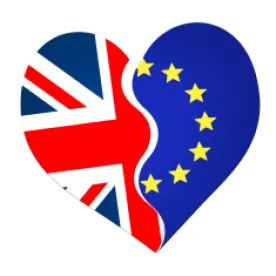The approach in the European Union (Withdrawal) Bill remains the only conceivable way that the UK can both manage to leave the EU and have a working legislative framework on 30 March 2019 by simultaneously repealing the European Communities Act 1972 and incorporating the large body of EU law on which the legal system depends. It passed its first test at the House of Commons with a majority of 36, a majority larger than the government is, even taking the support of the DUP into account. Despite a fairly comfortable government victory, few believe that the Bill can pass into law without amendments. The delegated powers (the so-called “Henry VIII powers”) are controversial, as are the rights given to ministers to implement the agreement under which the UK withdraws from the EU (which will affect such things as UK-resident EUcitizens’ rights), and general powers given to ministers to make amendments to other legislation that is linked, however vaguely, to Brexit.
The influential Hansard Society has written a magnum opus setting out three things that should be done to ensure that Parliament has sufficient scrutiny over the Executive. These three things are:
-
Amending the European Union (Withdrawal) Bill to circumscribe the powers it delegates more tightly
-
Strengthening the scrutiny procedure for the exercise of the most widely delegated powers in the Bill
-
Introducing a new “sift and scrutiny” system for the House of Commons in relation to delegated legislation in general, not just delegated legislation under the Bill.
There’s unlikely to be Parliamentary time or inclination to take a philosophical look at delegated legislation. However, some circumscribing and additional parliamentary scrutiny is likely to emerge over the course of the next few months. There are eight days set aside for the debate on the Bill at the Committee stage (where the Bill is considered by MPs line by line), and another two days set aside for debate when it returns to the House of Commons. Things will get interesting when it gets to the House of Lords, because it is unelected and has an overwhelming majority of members who oppose both Brexit and any suggestion of a power grab by the Executive.
Following the Daily Telegraph article by the Foreign Secretary, Boris Johnson, in which he expressed his vision for the UK outside the EU, and hinted again at the notorious claim that an extra £350m a week (or “a lot of it”) could be spent on the NHS following Brexit, details have emerged of a Cabinet split. This does at least provide a much-desired indication of a general direction of travel. Some in the government, including the Chancellor Philip Hammond, and possibly the Secretary of State for Brexit David Davis, prefer what is termed an “EEA lite” Brexit. Broadly, this seems to mean that the UK would leave the single market in order to end free movement (the reddest of the UK government’s red lines), but incorporate EU regulations and abide by judgments of the European Court. This arrangement (the argument goes) would mean that the UK synthetically achieves the benefits of single market membership. It’s not entirely clear whether under this model the UK actually joins the EEA; currently, membership of the EEA also requires the member to sign up to free movement. It appears that the intention is that the UK would not seek formally to join the EEA. In that regard, it is closer to the Swiss rather than the Norwegian model. What EEA lite does mean is that while the UK would be free to enter into FTAs with third countries, such as the US, it is still heavily subservient to the EU, and its freedom fundamentally to detach itself from Europe is likely to be curtailed. The question of any customs arrangement remains open. And as with all things Brexit related, what the UK wants, and what the EU or EEA is prepared to agree to, may not necessarily coincide.
“CETA plus” appears to mean that the UK agrees a deal with the EU based on the EU-Canada FTA, with additional agreement on services, given the importance of services to the UK economy. The UK, not being a member – synthetic or otherwise – of the single market, would not need to look to mirror EU regulations. Supporters in the Cabinet appear to include the Foreign Secretary, the Secretary of State for Environment, Food and Rural Affairs, Michael Gove and the Secretary of State for International Trade, Liam Fox. This would be very close to a “hard Brexit” and would take time to agree (CETA negotiations started in 2009, although we do now at least have a precedent document on which to base a new FTA).
None of these positions tells us anything about the nature of a transition agreement with the EU, or the amount of money that the UK would be prepared to pay by way of a settlement. Neither tells us anything about the status of EU citizens in the UK and both are very UK-centric and , as such, may not be acceptable. Neither is likely to be the subject of a further referendum.
Because neither are “off the shelf” models, unlike the EEA, they would involve a considerable time to negotiate. At the end of September, there will be 18 months left. When Prime Minister Theresa May delivers her speech in Florence this Friday, we hope to hear more about the transition and what the UK wants to be transitioning towards.




 />i
/>i

